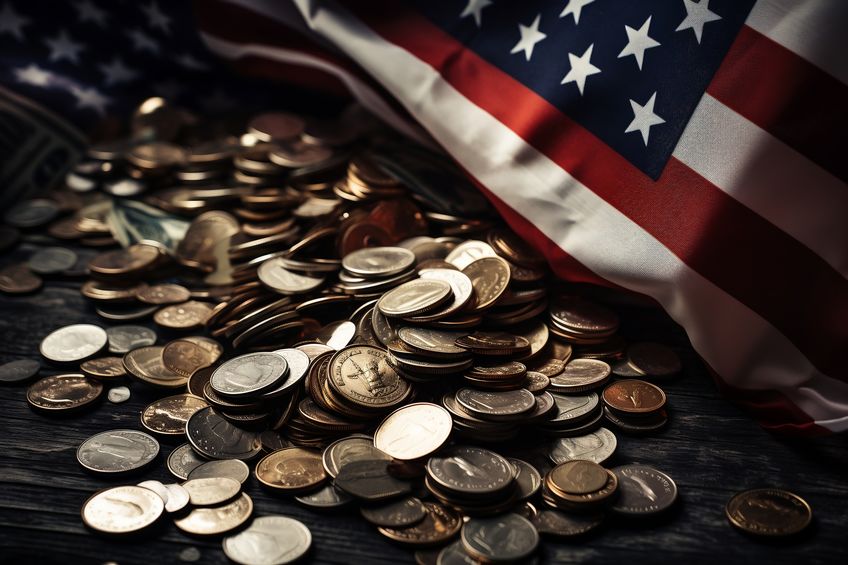One of the most exciting parts of coin collecting is discovering that a small, ordinary-looking coin in your possession is a key date—one that’s rare, historically significant, or especially valuable to collectors. These key dates serve as milestones within a series and can dramatically increase the value of a collection. They also offer insight into U.S. history, economic shifts, and printing anomalies that make the hobby even more fascinating.
At Centennial Auctions, we’ve seen countless collectors light up after realizing they’ve had a key date coin tucked away for years. If you’re building or evaluating a collection, here are the key dates that every U.S. coin collector should have on their radar.
1909: A Presidential First and a Legendary Initial
In 1909, the U.S. Mint introduced the Lincoln Wheat Cent to celebrate Abraham Lincoln’s 100th birthday. This was the first American coin to feature a real person, and it marked the beginning of a new era in coin design.
The real star of 1909 is the 1909 S VDB. This coin, minted in San Francisco, has the designer’s initials (VDB for Victor David Brenner) prominently displayed on the reverse. Only about 484,000 were made before the initials were removed due to public criticism. Today, this coin is one of the most sought-after in American numismatics.
1916: A Year of Change and Collectible Firsts
The year 1916 saw the end of the Barber coinage and the introduction of two beloved designs: the Mercury Dime and the Standing Liberty Quarter.
The 1916 D Mercury Dime is particularly important, with a mintage of only 264,000. It’s rare in all grades and considered the key to the entire Mercury Dime series. If you find one with a visible D mintmark on the reverse, you may be holding something very special.
1921: Low Production and High Demand
After World War I, the mint scaled back coin production significantly. As a result, 1921 produced several low-mintage coins across various denominations.
Look out for the 1921 Peace Dollar, which was the first year of issue for the series and had a very short production run. Other key coins from 1921 include the 1921 Walking Liberty Half Dollar and the 1921 D and 1921 S Mercury Dimes. All of these are low in supply and high in collector interest.
1932: Washington’s Birthday and a New Quarter
In 1932, the U.S. Mint released the Washington Quarter to honor George Washington’s 200th birthday. While the coin itself isn’t rare, the 1932 D and 1932 S quarters are.
These two mint marks had very limited production that year—only 436,800 in Denver and 408,000 in San Francisco—making them the key dates in the Washington Quarter series.
1943: Steel Cents and a Surprise Error
With copper needed for World War II ammunition, the Mint switched to zinc-coated steel for one year. The 1943 steel cents are easy to spot with their shiny, silvery appearance.
But the real prize is the extremely rare 1943 copper cent. A few were mistakenly struck on leftover copper planchets from 1942. If you ever come across a 1943 penny that sticks to a magnet, it’s steel. If it doesn’t, get it tested—it could be a copper rarity worth ten of thousands of dollars.
1955: The Double Take
The 1955 Doubled Die Lincoln Cent is one of the most famous and easily recognized error coins in U.S. history. The doubling is visible to the naked eye in the date and lettering on the obverse side of the coin.
Although it entered circulation by accident, it became a legend among collectors. It remains one of the most popular error coins to this day and is a must-have for any serious Lincoln Cent enthusiast.
1964: The End of Silver in Circulation
The year 1964 marked the last time the U.S. produced circulating coins with 90 percent silver content. Rising silver prices led to a major shift in composition starting in 1965.
Collectors look for pre-1965 dimes, quarters, and half dollars for their silver content alone. The 1964 Kennedy Half Dollar is especially popular, being both the first year of issue and the last 90 percent silver half dollar minted for general use.
1970: A Modern Rarity
The 1970 D Kennedy Half Dollar was only available in mint sets, not in general circulation. With a mintage under three million, it’s considered one of the lowest production modern half dollars and is frequently overlooked by casual collectors.
Its limited release makes it a modern key date that’s becoming harder to find in higher grades.
1982: Small Changes and Big Variety
In 1982, the U.S. Mint changed the composition of the Lincoln Cent from copper to zinc with a thin copper coating. During the transition, both compositions were used, and several varieties were created, including large and small date versions.
There are seven different 1982 Lincoln Cent varieties. For collectors who enjoy a challenge, completing the full set is both rewarding and surprisingly complex.
Why These Dates Matter
Key dates bring historical context, challenge, and excitement to coin collecting. They often represent changes in design, production errors, material shortages, or limited releases that were never meant to become iconic—but did. For collectors, these coins serve as milestones, goals, and conversation starters.
Even if you’re not trying to complete an entire series, knowing these key dates can help you better evaluate what’s already in your collection. You might be surprised by what you find in a coin jar, an old safe, or a collection passed down through generations.
Let Centennial Auctions Help You Discover What You Have
At Centennial Auctions, we’ve spent decades helping collectors and families uncover the value of their coins. If you think you may own a key date coin or if you simply want to know what your collection might be worth, we’re here to help.
We offer USPAP-compliant appraisals, expert evaluations, and regular coin auctions across New England. Whether you’re preparing for sale, estate planning, or just curious, our team can guide you every step of the way.
Ready to take a closer look at your coins? Contact us at 603-356-5765 today. You may have a key date hiding in plain sight.

